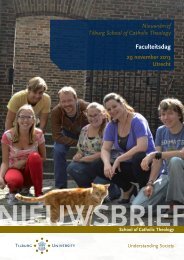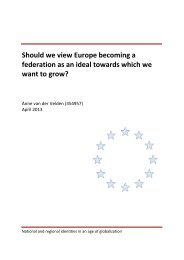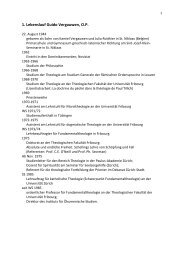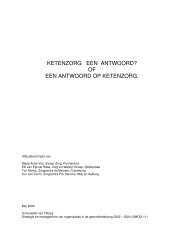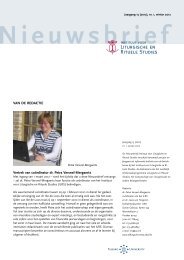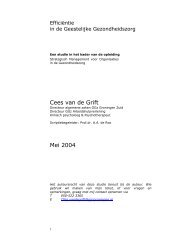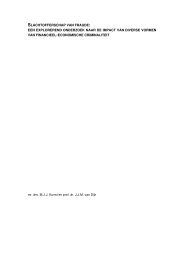Here - Tilburg University
Here - Tilburg University
Here - Tilburg University
Create successful ePaper yourself
Turn your PDF publications into a flip-book with our unique Google optimized e-Paper software.
Presenter<br />
Croon, Marcel; <strong>Tilburg</strong> School of Social and Behavioral Sciences<br />
Authors<br />
Marcel Croon; Jacques A. Hagenaars; Department Methodology and Statistics,<br />
<strong>Tilburg</strong> <strong>University</strong><br />
Wicher Bergsma; London School of Economics and Political Science, UK<br />
Francesca Bassi; <strong>University</strong> of Padova, Padova, Italy<br />
Title<br />
Marginal models for longitudinal categorical data from a complex rotating design<br />
Abstract<br />
In their book Marginal Models for Dependent, Clustered, and Longitudinal<br />
Categorical Data (2009), Bergsma, Croon & Hagenaars discuss several<br />
applications of marginal models for categorical data observed in longitudinal<br />
studies. They distinguish between the analysis of trend data, when different<br />
random samples from the same population are drawn at different time points,<br />
and panel data, when the same random sample from a population is observed at<br />
different time points. For both types of data, they discuss how various<br />
hypotheses about gross and net changes over time can be tested by marginal<br />
modeling.<br />
These methods can be extended to the case the data are collected in a<br />
more complex way, for instance, by means of a rotating design in which different<br />
random cross-sectional samples are followed over time at different measurement<br />
occasions. The data which will be analyzed come from the Italian Continuous<br />
Quarterly Labour Force Survey, which is cross-sectional with a 2-2-2 rotating<br />
design. The questionnaire yields multiple indicators of labour force participation<br />
for each quarter: (i) each respondent is classified as employed, unemployed or<br />
out of the labour market according to the definition of the International Labour<br />
Office on the bases of answers given to a group of questions (ii) each<br />
respondent is asked to classify himself as employed, unemployed or out of the<br />
labour market, the so-called self-perceived condition; and (iii) a retrospective




